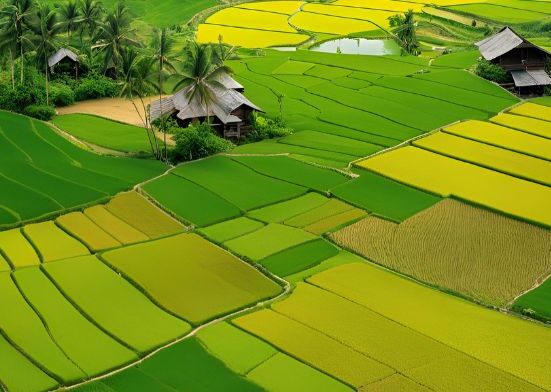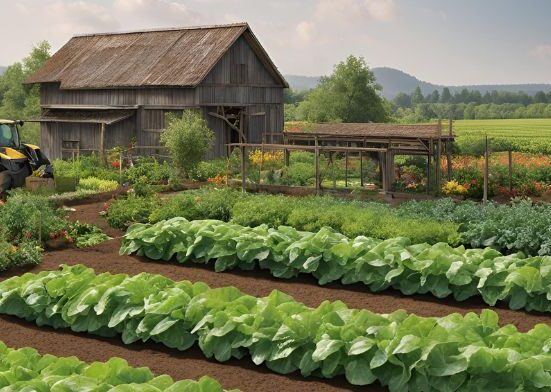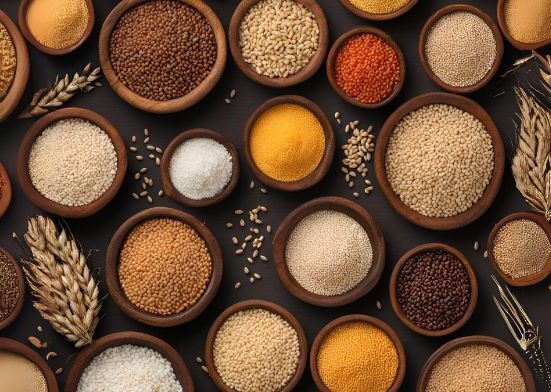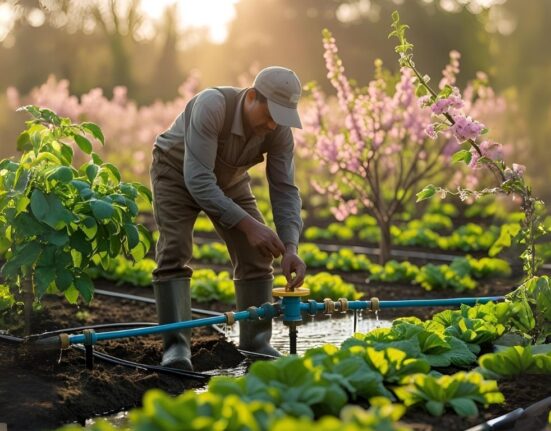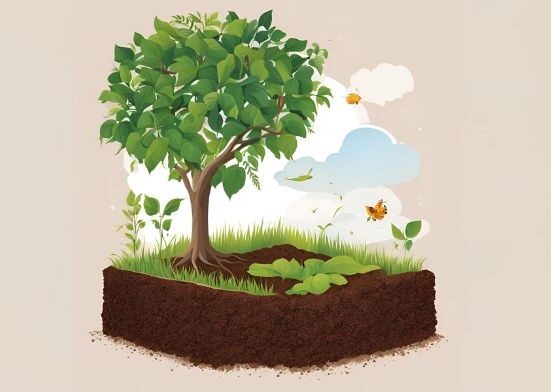Choosing the right system can make all the difference when irrigating your garden, lawn, or landscape. Among the many options available, drip emitters and irrigation bubblers are two popular choices for delivering water efficiently to plants. But which one is better suited for your needs? This comprehensive guide deepens into bubbler irrigation and drip systems, comparing their features, benefits, and ideal use cases. Whether nurturing a small backyard garden or managing a sprawling orchard, this blog post will help you decide between drip emitters, irrigation bubbler heads, and other related systems. Let’s get started!
What is a Drip Bubbler?
A drip bubbler is an irrigation emitter used in drip irrigation systems. It delivers water instantly to the root zone of plants in a slow, controlled manner, typically at a low flow rate (e.g., 0.5 to 2 gallons per hour). Unlike standard drip emitters that release water in small drops, bubblers emit water in a gentle, umbrella-like pattern or as a small stream, making them ideal for watering larger plants, shrubs, or trees with wider root systems. They help conserve water by minimizing runoff and evaporation and are commonly used in landscapes, gardens, or agricultural settings.
Depending on the model, Bubbler irrigation systems often deliver water at higher flow rates, typically between 1 to 10 GPH or more. Irrigation tree bubblers, for instance, are commonly used to flood the root zone of trees, ensuring deep watering that promotes healthy root growth.
How Does Drip Bubbler Irrigation Work?
Irrigation tree bubblers are particularly beneficial for watering trees, as they deliver water in a concentrated, slow stream that encourages deep root growth. The design of the bubbler irrigation heads allows them to release water in a controlled manner, so it doesn’t flow over the surface but is absorbed directly into the soil.
These systems often have adjustable settings that allow you to control the flow and coverage depending on your plant’s needs. Whether you have a few shrubs or large trees, irrigation bubbler heads can be tailored to suit your specific irrigation requirements.
What is a Drip Emitter?
Drip emitters are small devices used in drip irrigation systems to deliver water directly to the root zone of plants. These emitters release water slowly, typically in drops, ensuring that plants receive a steady, controlled moisture. Drip emitters come in various types, including inline emitters (built into tubing) and point-source emitters (attached to the end of tubing). They’re designed to minimize water waste by targeting specific plants or areas, making them a favorite for water-conscious gardeners.
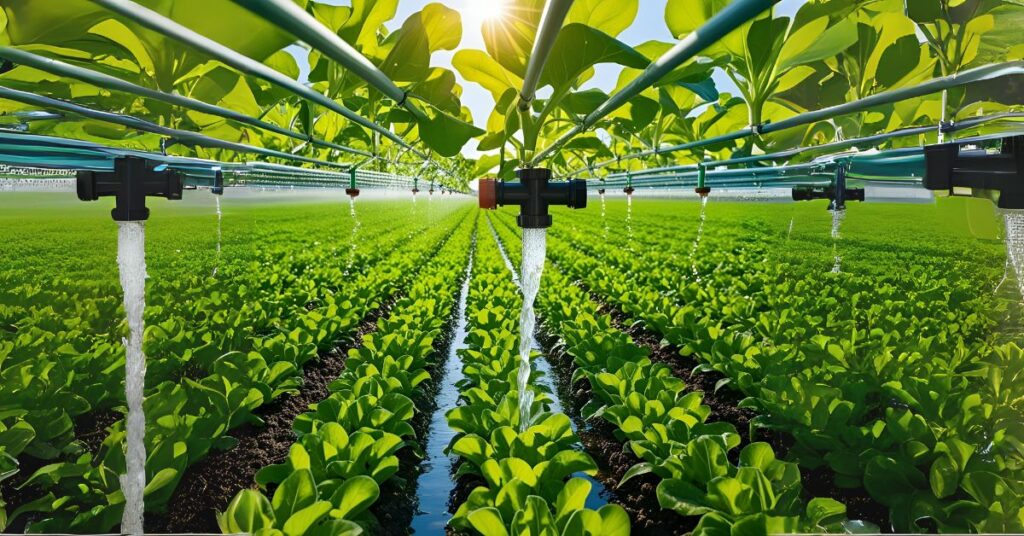
For example, if you’re growing a row of vegetables or a series of shrubs, drip emitters can be placed near each plant to provide tailored irrigation. Their flow rates typically range from 0.5 to 4 gallons per hour (GPH), allowing you to customize water delivery based on plant needs.
Types of Drip Emitters
- Pressure Compensating Emitters – These are designed to maintain a consistent flow rate, even if the water pressure fluctuates. This ensures that every plant receives the same amount of water, no matter where it is in the irrigation system.
- Non-Pressure Compensating Emitters – These emitters are typically used in areas where the water pressure is constant. They are simpler and more affordable but may not work as effectively in systems with uneven pressure.
Key Differences Between Drip Emitters and Irrigation Bubblers
Now that we’ve covered the basics let’s explore the key differences between drip emitters and irrigation bubblers. These differences will help you determine which system aligns with your irrigation goals.
Water Delivery Method
The most significant difference lies in how these systems deliver water. Drip emitters are all about precision. They release water in small, controlled droplets directly to the base of a plant. This targeted approach minimizes evaporation and runoff, making drip emitters highly efficient for water conservation.

In contrast, irrigation bubblers distribute water over a wider area. They create a gentle flow that spreads out, saturating the soil around a plant or group of plants. While this can be less precise than drip emitters, it’s advantageous for plants with larger root systems, such as trees or shrubs, that require broader soil saturation.
Coverage Area
Another critical distinction is the coverage area. Drip emitters are designed for spot irrigation, typically covering a small radius (a few inches) around the emitter. This makes them perfect for individual plants, vegetable rows, or container gardens.
Irrigation bubbler heads, however, cover a larger area, often several feet in diameter. For example, tree bubbler irrigation systems can water the entire root zone of a mature tree, which may span several feet. If you’re irrigating a flower bed or a cluster of plants, a bubbler can efficiently hydrate multiple plants at once.
Flow Rate
Flow rate is crucial when choosing between drip emitters and bubbler irrigation. Drip emitters typically have low flow rates, ranging from 0.5 to 4 GPH. This slow release ensures water penetrates deeply into the soil without overwhelming the plant.
Irrigation bubblers, including sprinkler and irrigation tree bubblers, have higher flow rates, often between 1 and 10 GPH or more. This higher flow is necessary for saturating larger areas quickly, but it can lead to more water usage if not managed carefully.
Installation and Maintenance
Both systems are relatively easy to install, but their maintenance needs differ. Drip emitters are prone to clogging, especially in areas with hard water or high sediment levels. Regular cleaning or using filters is essential to keep them functioning correctly. Installation involves placing emitters at the base of each plant and connecting them to tubing, which can be time-consuming for large landscapes.
Irrigation bubbler heads are less susceptible to clogging due to their larger openings, but they may require occasional adjustments to ensure even water distribution. Installing bubbler drip systems is straightforward, as a single bubbler can cover multiple plants, reducing the number of components needed.
Water Efficiency
Regarding water efficiency, drip emitters generally have the upper hand. Their precise delivery minimizes waste, making them ideal for drought-prone regions or areas with water restrictions. However, bubbler irrigation can also be efficient when used correctly, especially for plants that require deep, infrequent watering.
For instance, irrigation tree bubblers are designed to deliver water slowly enough to allow deep soil penetration, reducing runoff. However, if bubblers are left on too long or used in the wrong setting, they can lead to overwatering or water pooling.
Flexibility and Adjustability
When it comes to flexibility, drip emitters have a slight advantage. They can be easily moved, repositioned, and adjusted to accommodate different plant sizes and irrigation needs. If you need to reconfigure your irrigation setup, drip emitters provide more adaptability.
While bubbler irrigation systems are adjustable, they are generally fixed regarding water delivery. Once you’ve set up a sprinkler or tree bubbler irrigation system, changing the coverage area can be a bit more challenging, as it’s designed to deliver a steady amount of water to a particular zone.
Pros and Cons of Drip Emitters
Pros of Drip Emitters
- Water Efficiency: Drip emitters deliver water directly to the root zone, reducing evaporation and runoff.
- Precision: They allow targeted irrigation, ensuring each plant gets the right water.
- Versatility: Suitable for various plants, from vegetables to ornamentals.
- Customizability: Available in various flow rates and types, you can tailor the system to your needs.
- Low Maintenance in Clean Systems: With proper filtration, drip emitters require minimal upkeep.

Cons of Drip Emitters
- Clogging Risk: Emitters can clog due to sediment, algae, or mineral buildup, requiring regular maintenance.
- Time-Consuming Installation: Placing emitters for each plant can be labor-intensive in extensive gardens.
- Limited Coverage: Not ideal for plants with wide root systems or densely planted areas.
Pros and Cons of Irrigation Bubblers
Next, let’s examine the benefits and drawbacks of irrigation bubblers, including irrigation bubbler heads and tree bubbler irrigation.
Pros of Irrigation Bubblers
- Broad Coverage: Bubblers are excellent for watering trees, shrubs, or flower beds with a single device.
- Deep Watering: Their higher flow rates promote deep root growth, especially for trees.
- Low Clogging Risk: Larger openings make bubblers less prone to clogging than drip emitters.
- Ease of Installation: Fewer bubblers are needed to cover large areas, simplifying setup.
- Adjustability: Many bubblers allow you to control flow and radius, offering flexibility.
Cons of Irrigation Bubblers
- Less Water Efficiency: Bubblers use more water than drip emitters, which can be a drawback in water-scarce areas.
- Risk of Overwatering: Bubblers can lead to water pooling or runoff without proper timing.
- Limited Precision: Not ideal for small plants or container gardens that require targeted watering.
Ideal Use Cases for Drip Emitters
So, when should you choose drip emitters? Here are some scenarios where they shine:
- Vegetable Gardens: Drip emitters are perfect for rows of tomatoes, peppers, or lettuce, where each plant needs individualized care.
- Container Plants: Potted plants benefit from the precise water delivery of drip emitters.
- Small Shrubs or Perennials: Drip emitters ensure efficient watering for landscapes with spaced-out plants.
- Water-Scarce Areas: If you’re in a drought-prone region, drip emitters help conserve water.
- Sloped Landscapes: Drip emitters prevent runoff on slopes, delivering water exactly where needed.
For example, imagine you’re growing a raised garden bed with herbs and vegetables. By placing a drip emitter at the base of each plant, you can ensure that your basil and zucchini get just the right amount of water without wasting a drop.
Ideal Use Cases for Irrigation Bubblers
Now, let’s look at when irrigation bubblers are the better choice:

- Tree Irrigation: Irrigation tree bubblers are ideal for young or mature trees with wide root systems.
- Flower Beds: Bubblers can hydrate densely planted beds with a single device.
- Shrubs and Large Plants: Plants with expansive root zones benefit from the broad coverage of bubblers.
- Flat or Low-Slope Areas: Bubblers work well where water can spread evenly without excessive runoff.
- Deep Watering Needs: Bubblers deliver the necessary volume for plants that thrive with infrequent, deep watering.
For instance, if you have a newly planted oak tree in your yard, a tree bubbler irrigation system can flood the root zone, encouraging strong, deep roots. Similarly, a flower bed filled with roses or hydrangeas can thrive with a single irrigation bubbler head, providing consistent moisture.
Combining Drip Emitters and Bubblers
Interestingly, you don’t always have to choose between drip emitters and irrigation bubblers. In many landscapes, combining the two creates a highly efficient irrigation system. For example:
- Use drip emitters for vegetable gardens, container plants, or small shrubs.
- Install irrigation tree bubblers for trees and large shrubs that need broader coverage.
- Place bubbler drip systems in flower beds or densely planted areas.
By zoning your irrigation system, you can tailor water delivery to different plant types within the same landscape. Modern irrigation controllers allow you to set separate drip and bubbler zone schedules, ensuring optimal watering for every area.
Factors to Consider When Choosing
To make an informed decision, evaluate the following factors:
Plant Type
What are you watering? Small, delicate plants like herbs or seedlings benefit from drip emitters, while trees and shrubs thrive with irrigation bubblers.
Soil Type
Soil affects how water spreads. Sandy soils absorb water quickly, making drip emitters a good choice to prevent waste. Clay soils hold water longer, so bubbler irrigation can work well for deep watering.
Water Availability
If water is scarce, drip emitters are more efficient. Irrigation bubbler heads may be more practical if you have ample water and need to cover large areas.
Landscape Size
For small gardens, drip emitters are easier to manage. For large landscapes with trees and shrubs, tree bubbler irrigation simplifies watering.
Budget
Drip systems can be more expensive upfront due to the number of emitters and tubing required. Bubblers often require fewer components, potentially lowering costs.
Maintenance Preferences
If you prefer low-maintenance systems, irrigation bubblers are less prone to clogging. If you don’t mind regular upkeep, drip emitters offer superior precision.
Tips for Optimizing Your Irrigation System
Whether you choose drip emitters, irrigation bubblers, or a combination, here are some tips to maximize efficiency:
- Use a Timer: Install an irrigation controller to automate watering schedules, ensuring plants get water at the right time.
- Check for Leaks: Regularly inspect tubing, emitters, and bubblers for leaks or blockages.
- Install Filters: For drip systems, use a filter to prevent clogging from sediment or debris.
- Adjust for Seasons: Reduce watering in cooler months and increase it during hot, dry periods.
- Mulch Around Plants: Mulch helps retain moisture, reducing irrigation frequency.
Conclusion: Which Is Better?
So, which is better—drip emitters or irrigation bubblers? The answer depends on your specific needs. Drip emitters are the way to go if you prioritize water efficiency, precision, and small-scale gardening. They’re perfect for vegetable gardens, container plants, and water-scarce regions. However, if you’re watering trees, shrubs, or large flower beds, bubbler irrigation—including irrigation tree bubblers and sprinkler bubblers—offers the broad coverage and deep watering needed for healthy root systems.
The best solution is often a hybrid approach, combining drip emitters for precision and irrigation bubbler heads for broader coverage. By understanding your plants, soil, and water availability, you can create an irrigation system that keeps your landscape thriving while conserving resources.
Ready to upgrade your irrigation? Assess your garden’s needs, consider the above factors, and choose the best system for you. Happy gardening!
FAQ
Is a Drip Bubbler Better Than a Drip Emitter?
Larger plants with extensive root systems, such as trees and large shrubs, tend to respond better to drip bubblers. You can change them, and they release more water. This makes it easier to provide deep roots with adequate water, which promotes robust and healthy plant growth.
What is The 30/30 Rule for Drip Irrigation?
Although there is a 30/30 rule (30-foot max length, 30 gph max flow rate), others recommend keeping runs of 1/4″ tubing under 20 feet. Keeping these runs short should be pretty straightforward since 1/4″ tubing typically comes off the main 1/2″ line only far enough to reach nearby plants or trees.
How Many Drippers Can I Run on One Line?
The number of drippers you can run on one line depends on the tubing size, the flow rate of the drippers, and the water pressure available. Generally, you should divide the maximum flow capacity of the tubing by the flow rate of each dripper to determine the number of drippers you can use. For example, a 1/2″ poly tubing can supply 200 GPH (gallons per hour), meaning you could potentially use 200 drippers with a 1 GPH flow rate.
How Many GPH Do I Need for Drip Irrigation?
Use emitters with flow rates between 0.5- 2.0 GPH for even watering and distribution and 6” or 12” spacing depending on your plant type (veggies vs. perennials shrubs).
What is The best PSI for Drip Irrigation?
For most drip irrigation systems, the best operating pressure is 10 to 30 psi. However, it’s crucial to consider the specific emitters or dripline being used, as some may require lower or higher pressures. For example, Drip Depot recommends 25 psi regulators for most drip systems but suggests a maximum of 15 psi for thin-walled drip tape.


